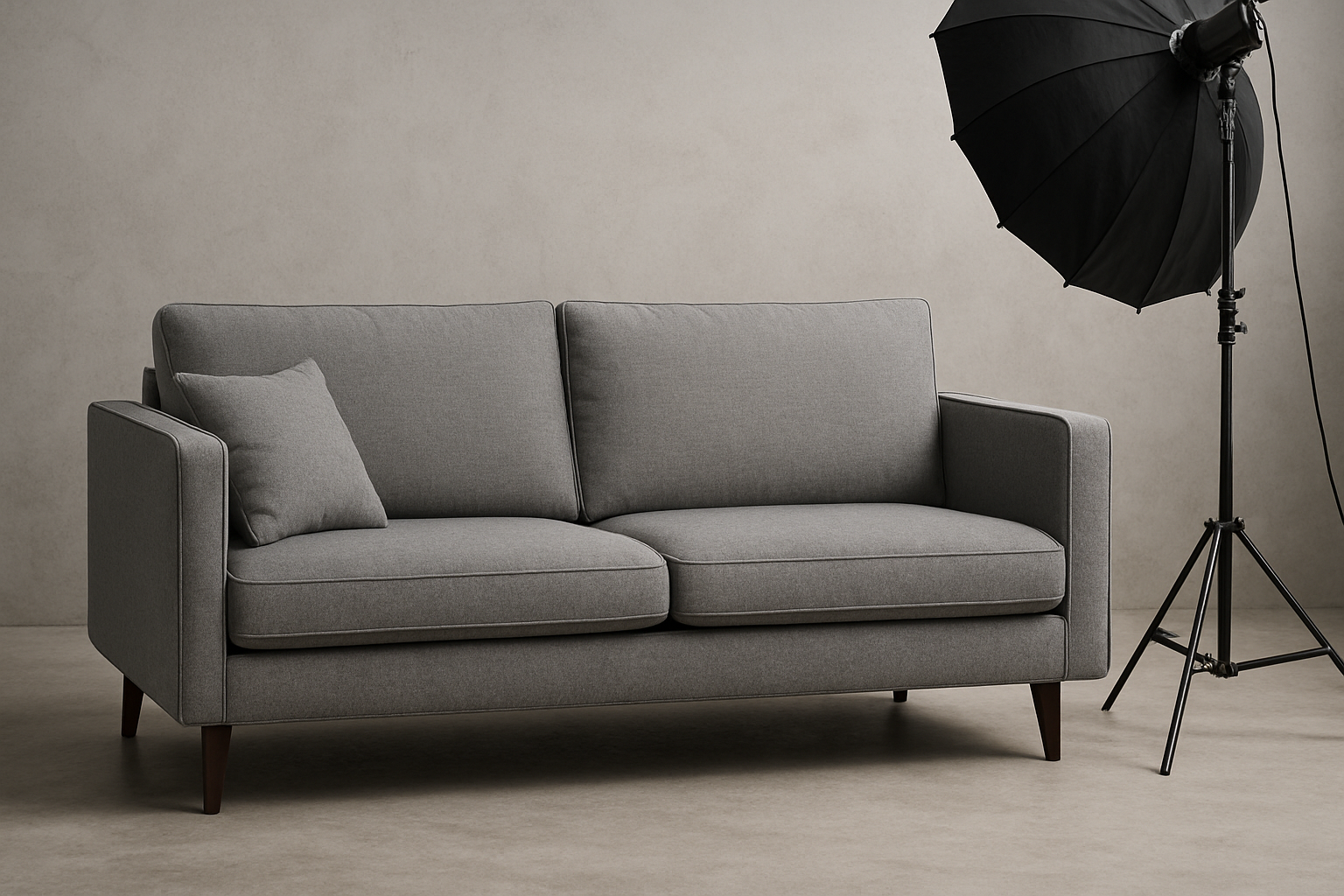Launch realities: time, samples, and change requests
Traditional photography is excellent, but real-world constraints often get in the way: sample delays, studio lead times, prop sourcing, and post-production rounds, each adding days or even weeks. With 3D rendering, we build a master model once and generate every view, finish, and environment you need, without waiting for samples or juggling studio time.
Where 3D wins for speed & flexibility
- No sample dependency: Start from drawings or CAD and produce visuals while tooling is underway.
- Unlimited variants: Colorways, materials, hardware, even regional power plugs — switch in minutes.
- Consistent lighting: One lighting rig for the entire catalogue, so grids and PDPs look unified.
- Re-usable scenes: Build one “studio” and reuse for future launches — no rebooking or freight.
- Fewer reshoots: Need a new angle? Render it. Need a different prop? Drop it in.
Result: faster asset delivery, consistent quality, and lower lifetime costs — especially when you launch often or manage multiple SKUs.
Quality: “is 3D really photoreal?”
Yes, when you control materials, light, and camera like a photographer would. We calibrate reflectance, roughness, and bump maps against your material references, then lock camera height and focal length to match brand guidelines. In many cases, 3D outperforms studio shots for reflective, textured, or oversized products that are hard to light perfectly in real life.
3D vs studio: typical project comparison
Modern 3D workflow
- Start from CAD/drawings — no sample needed
- Library-based materials & lighting
- Batch renders for all angles/finishes
- Easy updates for changes
- Reusable scenes for future launches
Studio photography
- Requires finished sample & shipping
- Physical studio booking & props
- Reshoots for missed angles/variants
- Post-production per image set
- Less reusable across launches
What assets you get from us
- Packshots: crisp, glare-controlled PNG/WebP with alpha for flexible layouts.
- Lifestyle renders: in-brand scenes that match your audience and price point.
- 360° / turntables: interaction-ready sequences for PDPs and showrooms.
- BIM/IFC/Revit objects: for specifiers and B2B sales enablement.
- Master scene: your reusable lighting rig and environment for future launches.
When studio still makes sense
Use photography for highly tactile subjects (food/soft goods worn by people), when you need true-life imperfections, or when PR requires behind-the-scenes authenticity. We often mix methods: 3D for catalogue speed and consistency, studio for flagship hero shots featuring people.
How a typical project runs
- Brief & inputs: CAD or drawings, finishes, angles, target use (web, print, marketplace).
- Look development: materials & light calibrated to brand references.
- Draft renders: angle/scene approvals, corrections.
- Finals & delivery: optimized assets for web & print, plus the reusable scene.
Need examples?
Ask us for before/after sets comparing studio shots and 3D for reflective metals, fabrics, and textured wood. We’ll show how 3D lets you control every highlight and remove dust, glare, and inconsistencies instantly.
Start a 3D trial set